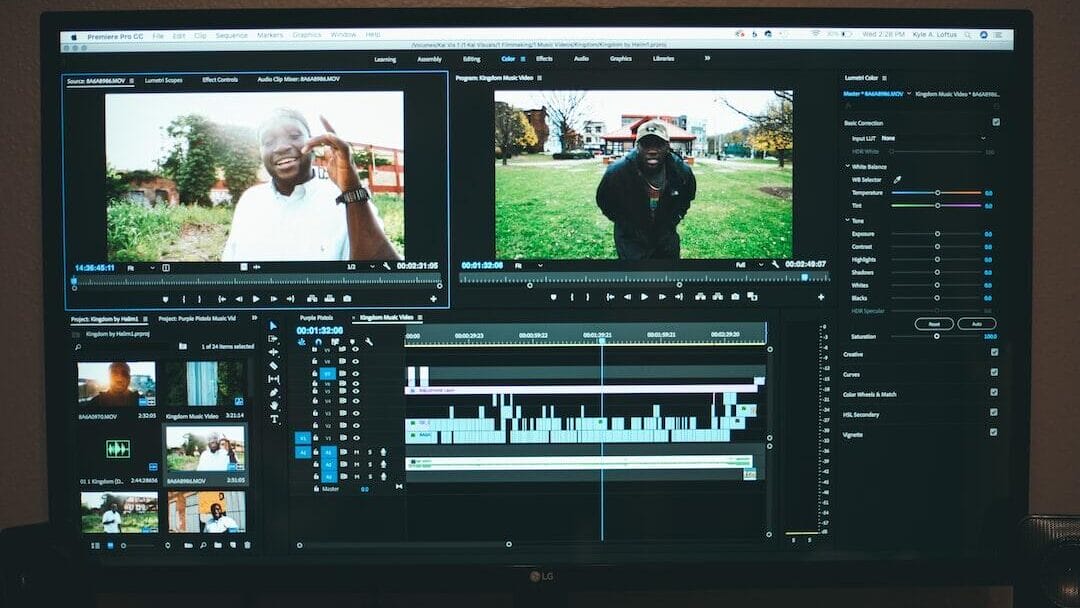If you’ve ever opened a video editing app and felt overwhelmed or underwhelmed, you are not alone. Many video editors are either too basic or overly complex. Some are packed with features that you do not need. Others are missing the essential tools that would assist you the most. The truth is that most video editors are designed to serve a broad audience.
You don’t have to be a software expert either. You simply need a plan, appropriate tools, and some patience. If you are ready to take charge and create your perfect tool, this guide will outline the top four steps to get started. Continue reading to discover everything you need to know.
Start with a Clear Plan Before You Build
Before you touch a single line of code, you need to be sure about what you want your editor to do. Think about your usual editing routine. Do you cut and join video clips often? Do you work with sound and background music?
Maybe you love adding titles and overlays or need strong export options. Writing these needs down helps make your goal clear and realistic. It also keeps you from getting lost in the process.
Additionally, you need to be aware of who the target user is for this editor. If it is intended exclusively for your personal use, you can make quicker decisions and concentrate on tools that are significant only to you. However, if you want others to use it as well, your design must be user-friendly.
The layout, color scheme, and instructions must also be clear to someone who was not involved in your initial planning. Once you know your features and your users, start exploring what already exists. Look at both free and paid video editors and study what works well.
Check user reviews and test the ones that seem similar to your vision. Doing this will help you avoid common mistakes and give you ideas for extra features that users really value.
Pick the Tools That Will Do the Job
Every piece of software needs a strong foundation. That’s why your next step is to pick the right tools for building your video editor. You’ll need a language to write your program and some libraries or frameworks that make it easier to work with video and audio.
Some people choose Python because it’s easier to read and has many tools for building apps. Others go for C++ when they want more power and speed. If you’re building for the web, JavaScript with HTML5 and Electron is a strong combo.
Next, you’ll need a library that lets you open and edit video files. A popular choice is FFmpeg. It’s a powerful, free tool that many apps already use under the hood. It can trim, cut, compress, and convert videos without losing quality. When added to your program, it gives you full control of how video and sound are handled.
You’ll also need a way to build your user interface. That means buttons, sliders, windows, and menus. There are tools like PyQt, GTK, or React, depending on the language you choose. These tools let you create a screen where people can see and use the editor.
Pick something simple if it’s your first time. The faster you can see results, the more motivated you’ll feel to keep going.
Test Early, Test Often, and Keep It Simple
Now it’s time to bring your plan to life. Start small. Make a version of your editor that does one thing well, like trimming a video or saving an audio track. Once that works, test it again and again. Try different files, different formats, and different settings. You want to be sure it works every time, not just once.
Don’t rush to add too many features. Too many new ideas at once can cause problems. Focus on what you truly need. Add features one by one. Each time, go back and test the full editor again. If something breaks, fix it before moving forward. The more time you spend on testing, the smoother the editor will feel once it’s finished.
Along the way, keep your files safe and organized. Save different versions of your work so you can go back if something goes wrong. Use comments in your code to explain what each part does. These simple steps will save you from confusion later.
There’s no perfect version of a video editor. But there is a version that works best for you. Your needs, your habits, and your workflow are what matter. So, aim for something that makes your editing faster and easier. That is the path to create your best video editor.
Add Your Style and Make It Yours
Once the main features are ready, it’s time to add your personal touch. A video editor is not just a tool. It’s part of how you express yourself. So think about how it looks and how it feels. Choose a color theme that makes you feel focused. Use fonts that are easy to read. Make sure the buttons and menus are in places that feel natural to you.
The more you use your editor, the more you’ll see ways to improve it. Maybe you’ll think of a new feature or a faster way to do something. The great thing is, you’ll know how to make those changes yourself. You’re not stuck waiting for updates from a company that doesn’t know your name. You’re the one in control.
Where Your Custom Editor Can Take You Next
Building a video editor from scratch may seem hard at first. But once you take the first few steps, you’ll start to see what’s possible. You won’t need to rely on tools that don’t fit your needs. You won’t have to pay for extras you’ll never use. Instead, you’ll have something that works the way you do.
Now is the time to stop waiting for the perfect tool. You already have the ideas. You already have the need. All that’s left is to start building. What you create today might be the exact solution you’ve been searching for all along.
Expand your knowledge and check out more posts on our blog!

